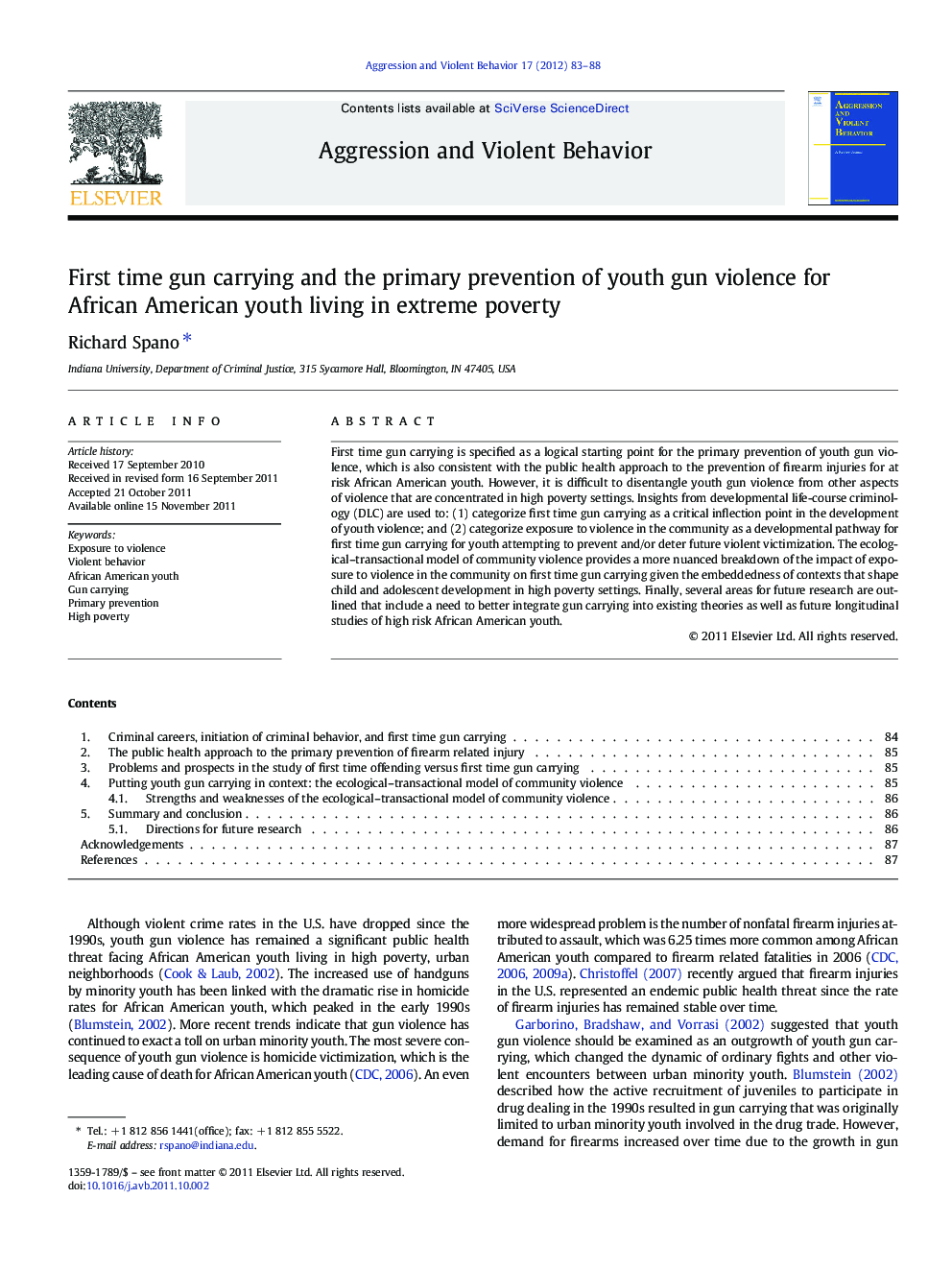| Article ID | Journal | Published Year | Pages | File Type |
|---|---|---|---|---|
| 94669 | Aggression and Violent Behavior | 2012 | 6 Pages |
First time gun carrying is specified as a logical starting point for the primary prevention of youth gun violence, which is also consistent with the public health approach to the prevention of firearm injuries for at risk African American youth. However, it is difficult to disentangle youth gun violence from other aspects of violence that are concentrated in high poverty settings. Insights from developmental life-course criminology (DLC) are used to: (1) categorize first time gun carrying as a critical inflection point in the development of youth violence; and (2) categorize exposure to violence in the community as a developmental pathway for first time gun carrying for youth attempting to prevent and/or deter future violent victimization. The ecological–transactional model of community violence provides a more nuanced breakdown of the impact of exposure to violence in the community on first time gun carrying given the embeddedness of contexts that shape child and adolescent development in high poverty settings. Finally, several areas for future research are outlined that include a need to better integrate gun carrying into existing theories as well as future longitudinal studies of high risk African American youth.
► First time gun carrying is a key anchor point for prevention of youth gun violence. ► First time gun carrying is an inflection point in the development of youth violence. ► Co-occurrence of risk factors for at-risk youth is a key area for future research. ► First time gun carrying should be examined in other studies of youth development.
